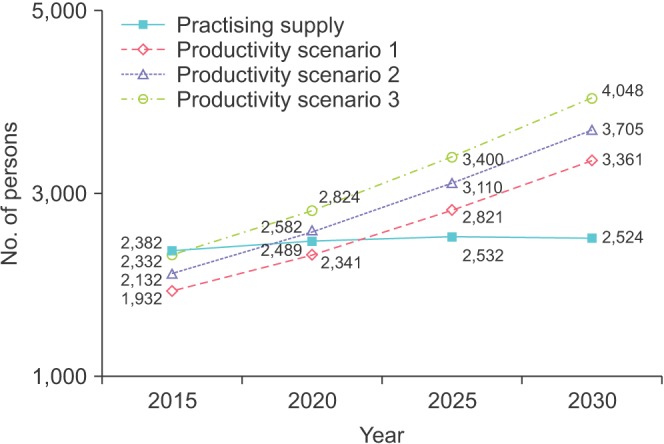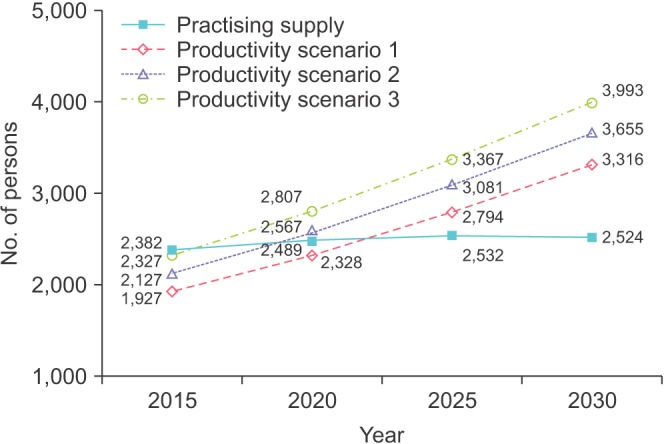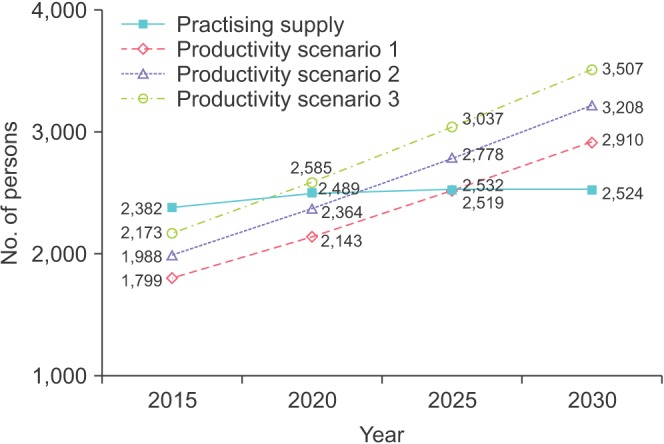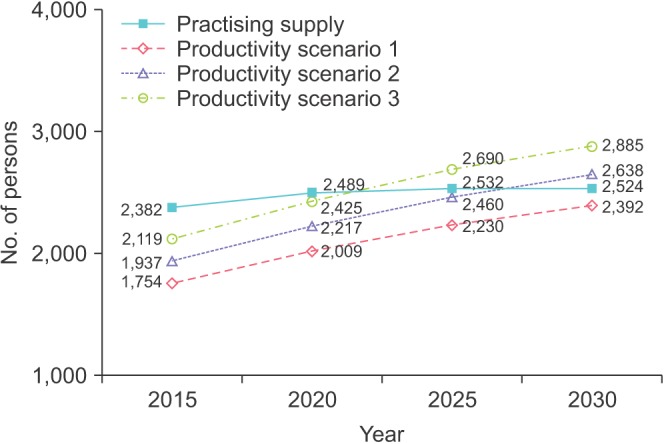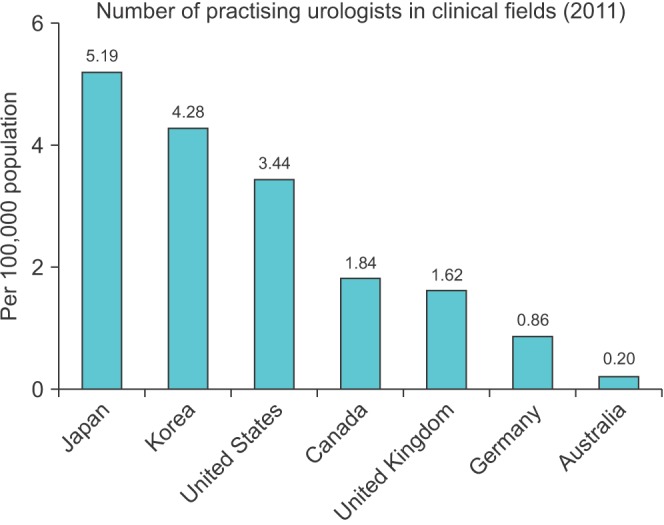Investig Clin Urol.
2017 Nov;58(6):400-408. 10.4111/icu.2017.58.6.400.
The future prospects of supply and demand for urologists in Korea
- Affiliations
-
- 1Department of Health Care Research, Korea Institute for Health and Social Affairs, Sejong, Korea. ohyho@kihasa.re.kr
- KMID: 2414766
- DOI: http://doi.org/10.4111/icu.2017.58.6.400
Abstract
- PURPOSE
The purpose of this study was to forecast the future supply and demand for urologists and to discuss the possible policy implications.
MATERIALS AND METHODS
A demographic utilization-based model was used to calculate the total urologist requirements for Korea. Utilization rates for ambulatory and inpatient genitourinary specialty services were estimated according to age, sex, and insurance status. These rates were used to estimate genitourinary specialty-specific total service utilization expressed in patient care minutes for future populations and converted to genitourinary physician requirements by applying per-genitourinary-physician productivity estimates. An in-and-out movement model for urologist supply was used.
RESULTS
Depending on assumptions about data at each step in the method, the supply of urologic surgeons is expected to exceed the demand by 2025 under the current enrollment rate of specialists (43.5% in 2012) when comparing the results of the projections under demand scenarios 3 and 4. However, if the current enrollment rate persists, the imbalance in supply and demand will be not severe by 2030. The degree of imbalance can be alleviated by 2030 by maintaining the current occupancy rate of urologic residents of 43.5%.
CONCLUSIONS
This study shows that the number of residents needs to be reduced according to the supply and demand for urologic surgeons. Moreover, a policy should be established to maintain the current occupancy rate of residents. The factors affecting the supply and demand of urologic surgeons are complicated. Thus, comprehensive policies encompassing these factors should be established with appropriate solutions.
MeSH Terms
Figure
Reference
-
1. Oh Y. Report on policy issues: optimal supply and demand of medical treatment resources and specialists. Seoul: Ministry of Health, Welfare and Family;2006.2. Confrey EA. The logic of a “shortage of health manpower”. Int J Health Serv. 1973; 3:253–259. PMID: 4716561.
Article3. Ray D. Indicators for the measurement of health manpower imbalances. World Health Stat Q. 1987; 40:349–354. PMID: 2893496.4. Son G. The supply and demand of medical workforce. In : 27th Korean Academy of Medical Sciences Forum; 1993 Apr 20-24; Seoul Education & Culture Center. Seoul: Korean Academy of Medical Sciences;1993.5. Oh Y. Forecasting specialties in major clinical specialty subject in Korea. Sejong (Korea): Korea Institute for Health & Social Affairs;2005.6. Auster RD, Oaxaca RL. Identification of supplier induced demand in the health care sector. J Hum Resour. 1981; 16:327–342. PMID: 7264294.
Article7. Oh Y. Issues, improvements and policy directions in residency program in Korea. Korean J Obstet Gynecol. 2007; 50:1595–1606.8. Greenberg L, Cultice JM. Forecasting the need for physicians in the United States: the Health Resources and Services Administration's physician requirements model. Health Serv Res. 1997; 31:723–737. PMID: 9018213.9. Traxler H. Physician supply modelling in the United States of America and its uses in assisting policy making. World Health Stat Q. 1994; 47:118–125. PMID: 7740826.10. Faulkner LR, Goldman CR. Estimating psychiatric manpower requirements based on patients' needs. Psychiatr Serv. 1997; 48:666–670. PMID: 9144821.
- Full Text Links
- Actions
-
Cited
- CITED
-
- Close
- Share
- Similar articles
-
- Estimated prospects of demand and supply of urologists in Korea over the next 10 years
- Future Supply of and Demand for Diagnostic Radiologists in Korea
- Analysis of Demand-Supply Status for Improving the Effectiveness of Plans for Supply and Demand of Reginal Patient Beds
- Appropriate Adjustment according to the Supply and Demand Status and Trend of Doctors
- The Demand and Supply of Nutritionist Workforce in Korea and Policy Recommendations

